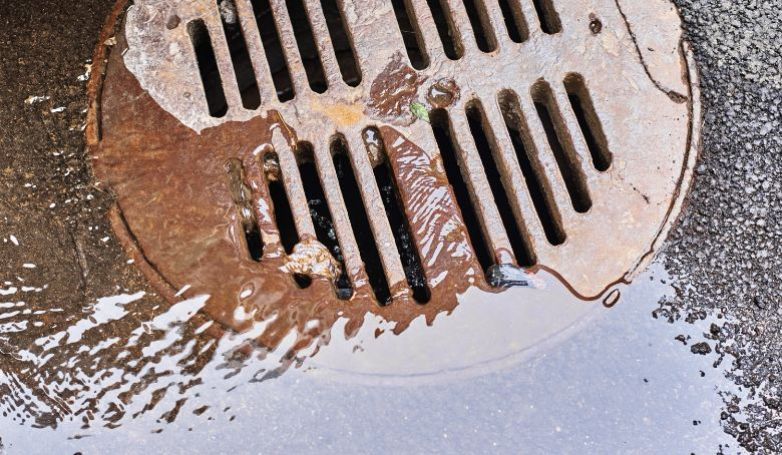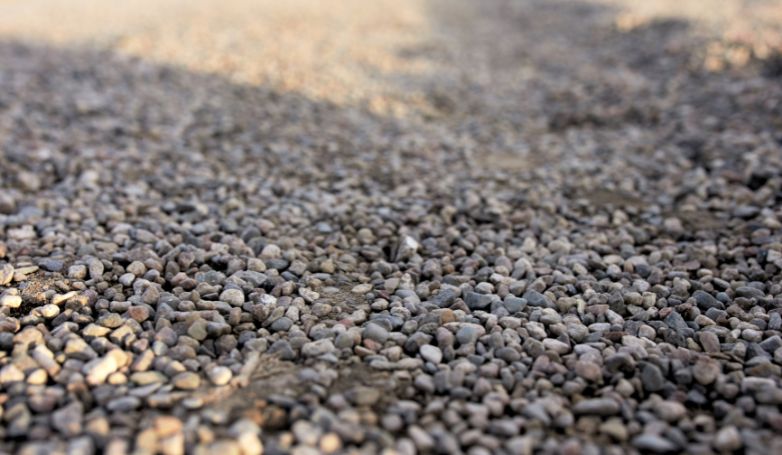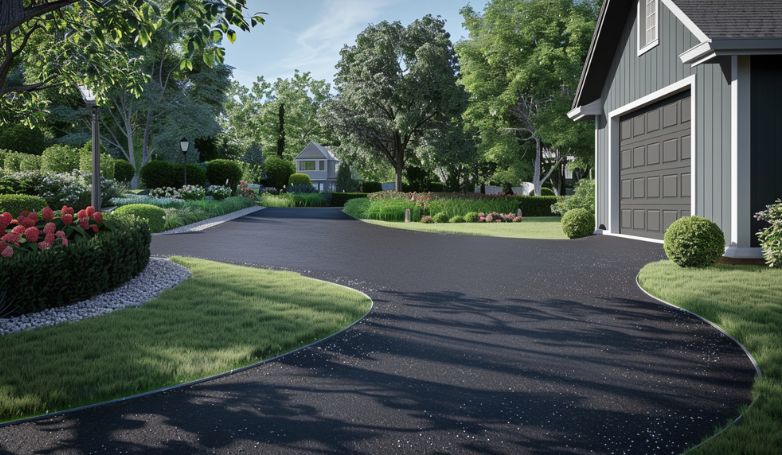Driveway to Garage Floor Transition – 10 Steps to Fix It
Transitioning smoothly from your driveway to your garage floor not only enhances curb appeal but ensures a seamless and safe entry into your home.
To fix the driveway to garage floor transition, begin by evaluating the existing height difference and materials. Choose durable options like concrete or asphalt for longevity. For seamless integration, use transition strips or create a slight slope to ensure smooth entry. Addressing drainage is also key to prevent water damage and ensure the transition remains functional and visually appealing over time.
Looking for more insights on how to seamlessly connect your driveway to your garage? Keep reading for step-by-step guidance and expert tips.
How to Fix the Driveway to Garage Floor Transition in 10 Steps
The transition from driveway to garage floor is crucial for a smooth, safe entrance to your home. Proper execution not only enhances curb appeal but ensures durability. Follow these detailed steps for a flawless upgrade.
1. Assessment and Planning

Begin your project by thoroughly assessing the current state of the driveway to garage floor transition. Look for any discrepancies in levels, potential water damage, or wear and tear that could affect the new installation. Planning involves determining the scope of work, necessary materials, and any adjustments needed to align with your home’s structural integrity. This step ensures a solid foundation for the project, setting the stage for a seamless and efficient process.
2. Choose Materials
Selecting the right materials is pivotal for both the aesthetic and functional success of the transition. Consider factors such as compatibility with existing surfaces, durability against weather conditions, and load-bearing capacity. Materials should not only complement the visual appeal of your home but also offer longevity and ease of maintenance. This decision impacts the project’s overall success, ensuring the transition withstands the test of time and use.
3. Ensure Proper Drainage

Proper drainage is essential to prevent water accumulation at the transition point, which can lead to damage over time. Assess the area’s slope and install drainage solutions that effectively direct water away from the structure. This might involve integrating channels, grates, or adjusting the landscape gradient. Ensuring effective drainage safeguards the transition against water damage, contributing to the longevity and integrity of the driveway and garage floor.
4. Mark the Transition Area
Accurately marking the transition area is crucial for precision in the following steps. Use markers or chalk to outline the exact area where modifications will be made. This visual guide helps in aligning materials and ensures that all subsequent actions are focused and accurate, leading to a cleaner, more professional finish.
5. Excavate if Necessary
Depending on the transition’s requirements, excavation may be necessary to remove old materials, level the ground, or prepare for the new subbase. This process involves carefully digging out the marked area to the required depth, ensuring a solid foundation for the transition. Proper excavation is key to preventing future settling or shifting, contributing to the durability of the finished project.
6. Install a Subbase

A strong subbase is essential for supporting the material and ensuring an even load distribution. This layer, typically made of gravel or compacted soil, provides a stable foundation that prevents cracking or shifting. Installing a properly compacted subbase is critical for the longevity of the transition, ensuring it remains level and intact under various conditions.
7. Apply the Transition Material
With the subbase in place, apply the chosen transition material, whether it be concrete, asphalt, or pavers. This step requires careful application to ensure a smooth, level transition between surfaces. Attention to detail here ensures a seamless integration, enhancing both functionality and visual appeal of the entryway.
8. Smooth and Level
After applying the material, it’s imperative to smooth and level the surface. This not only affects the transition’s appearance but also its safety and usability. A smooth, level surface prevents tripping hazards and ensures water runs off properly, avoiding pooling that could lead to damage.
9. Cure and Set
Allow the transition material ample time to cure and set, a process that can vary in duration depending on the materials used. Proper curing is crucial for the material to reach its full strength and durability. This patience ensures the transition area can withstand vehicle traffic, environmental elements, and time, maintaining its integrity and appearance.
10. Seal and Protect

Finally, apply a sealant to the cured surface to protect it from weather, stains, and wear. This protective layer extends the life of the material, maintaining its look and function. Regular maintenance, including resealing as necessary, will keep the transition looking new and performing well for years to come. This final step encapsulates your efforts, safeguarding the surface against the elements and ensuring a durable, aesthetically pleasing entrance to your garage.
Common Problems and Solutions
Addressing common issues in the transition from driveway to garage floor is essential for safety, functionality, and curb appeal. Here’s how to identify and rectify these typical challenges with effective solutions.
Uneven Settling
Uneven settling can create hazardous dips or uneven surfaces, often resulting from soil movement or compaction issues beneath the transition.
How to solve: Stabilize the ground by removing the uneven section, compacting the soil beneath, and adding a layer of gravel before reapplying the surface material. This reinforces the foundation, preventing further settling.
Drainage Issues

Water pooling due to inadequate drainage can lead to surface damage and foundation issues.
How to solve: Incorporate proper drainage solutions, such as installing French drains or grading the surface to encourage water flow away from the transition area, ensuring longevity and preventing water damage.
Material Deterioration
Continuous exposure to elements and traffic can lead to the breakdown of transition materials.
How to solve: Regularly inspect and replace worn materials with high-quality, durable alternatives. Applying protective sealants can also extend the lifespan of the area.
Height Discrepancies
A significant difference in height between the driveway and garage floor can cause tripping and vehicle damage.
How to solve: Install a ramp or adjust the height of one surface to match the other, ensuring a smooth, safe transition. Materials should be chosen for durability and slip resistance to maintain safety.
Transition Wear from Vehicle Traffic
Frequent vehicle movement over the transition can lead to wear and tear.
How to solve: Reinforce the transition area with more durable materials or additional layers to withstand traffic. Regular monitoring for signs of wear will allow for timely maintenance or repairs.
Aesthetic Mismatch
Discrepancies in materials or colors between the driveway and garage can be visually unappealing.
How to solve: Choose complementary materials or use transitional design elements to create a cohesive look. Consider resurfacing options to unify the appearance of both areas.
Weather-Related Damage

Extreme weather conditions, including freeze-thaw cycles, can cause cracking and other damage.
How to solve: Apply weather-resistant coatings and perform regular maintenance, such as sealing cracks and using ice melt products carefully to mitigate damage from cold weather.
Improving Slip Resistance
Slippery transitions can be dangerous, especially in wet or icy conditions.
How to solve: Apply textured coatings or slip-resistant sealants to enhance traction. Alternately, using inherently rough materials like stamped concrete or pavers can naturally improve grip.
Long-Term Maintenance Strategies
Neglect can turn minor issues into major repairs.
How to solve: Develop a regular maintenance schedule that includes cleaning, inspecting, and repairing the transition area. Applying sealants and addressing small issues promptly can greatly extend the life and appearance of the transition.
Best Materials for Driveway to Garage Floor Transition

Selecting the ideal material for the driveway to garage floor transition is pivotal for ensuring durability, aesthetic harmony, and practical functionality. Each material offers unique advantages tailored to different needs and preferences.
Concrete: Durability and Versatility
Concrete’s unmatched durability and versatility make it a prime choice for transitions between driveways and garage floors. Its ability to be easily shaped and finished allows it to match any home’s exterior decor, providing a wide range of decorative options. Concrete is capable of withstanding heavy vehicle traffic and extreme weather conditions, making it a long-lasting solution that maintains its appearance over time.
Asphalt: Cost-Effective and Flexible
Asphalt stands out for its cost-effectiveness and flexibility, offering a smooth transition that can effortlessly adapt to temperature fluctuations without cracking. This makes it an ideal material for various climates, providing a seamless connection between different surfaces. Its black color contributes to a sleek, uniform look that can easily blend with most driveway and garage styles.
Pavers: Aesthetic Appeal and Customization
Pavers are celebrated for their extensive customization options and aesthetic appeal. With a variety of colors, shapes, and sizes available, they allow for the creation of unique patterns that enhance the visual transition between the driveway and garage. This option not only adds a personalized touch but also significantly boosts the property’s curb appeal and value.
Gravel: Economical and Easy Installation

Gravel offers an economical and simple installation process, making it an attractive option for creating permeable transitions. It enhances natural drainage, reduces runoff, and blends seamlessly with various landscapes. Gravel’s varied textures and colors can complement any setting, providing a rustic or informal aesthetic.
Resin-Bound Surfaces: Smooth and Permeable
Resin-bound surfaces deliver a smooth, permeable finish, ideal for effective water management and reducing the risk of puddles and slips. The combination of natural aggregate and resin forms a durable, non-slip surface that allows water to drain through, offering both functional and aesthetic benefits to any driveway or garage entrance.
Rubber Thresholds: Accessibility and Cushioning
Rubber thresholds provide an accessible, cushioned transition that is particularly beneficial for reducing trip hazards and facilitating the movement of wheelchairs and walkers. This solution is practical for ensuring a gentle slope from the driveway to the garage, offering comfort and convenience for all users.
Stone: Natural Beauty and Longevity
Stone transitions offer unparalleled natural beauty and longevity. The unique texture and color variations of each piece can create visually stunning entrances that add timeless elegance to any property. Durable and resistant to weathering, stone is an investment that enhances the aesthetic and value of a home.
Brick: Classic Look and Strength

Brick brings a classic aesthetic combined with robust strength to driveway to garage floor transitions. Its versatility allows for various patterns and colors, making it suitable for both traditional and contemporary homes. Brick adds character and charm to any entrance, contributing to the overall appeal and durability of the transition.
Composite Materials: Modern Solutions
Composite materials offer modern, durable solutions for transitions, requiring little to no maintenance. These materials are designed to resist weathering, wear, and fading, providing a contemporary appearance that can mimic other materials. Composites represent a practical choice for homeowners looking for a sleek, modern transition with minimal upkeep.
Transition Strips: Bridging the Gap
Transition strips are specifically designed to smoothly and attractively bridge the gap between different flooring types. They come in various materials and finishes to ensure a cohesive look across the transition. Transition strips accommodate height differences and protect the edges of both surfaces, ensuring a practical and aesthetically pleasing solution.
Driveway to Garage Floor Transition: Costs and Budgeting

When planning the transition from your driveway to your garage floor, understanding the financial aspects is crucial for effective budget management. This section explores costs, savings, and budgeting strategies to help you make informed decisions.
Initial Cost Analysis: Materials and Labor
The initial cost of transitioning materials and labor can vary widely. Concrete and asphalt offer durability at different price points, while pavers and stone provide aesthetic appeal but may increase costs. Labor charges depend on the project’s complexity and the installation method chosen.
Long-Term Savings: Durability vs. Maintenance
Investing in durable materials like concrete or stone can lead to long-term savings, reducing the need for frequent repairs or replacements. However, considering maintenance expenses for less durable materials is essential for accurate budget forecasting.
Price Comparison: DIY vs. Professional Installation
DIY installations can significantly reduce costs but may lack the finish and durability of professional work. Professional installations, while more expensive, ensure expertise and often come with warranties, offering peace of mind and potentially saving money in the long run.
Budgeting Tips: How to Save Without Sacrificing Quality
To save money without compromising quality, consider materials that offer a balance of durability and cost-effectiveness. Planning your project during off-peak seasons can also result in lower labor costs. Additionally, sourcing materials directly from suppliers might yield discounts.
Hidden Costs: What to Anticipate Before Starting Your Project
Be prepared for hidden costs, such as preparation work, drainage improvements, and permits. These unforeseen expenses can impact your budget, so it’s wise to allocate an additional 10-20% of your total budget for such contingencies.
FAQs about Driveway to Garage Floor Transition

Check out the most frequently asked questions:
Can I create a seamless transition between different materials, like asphalt to concrete?
Yes, creating a seamless transition between materials like asphalt and concrete is possible using transition strips or gradually blending materials for a smooth changeover, ensuring both aesthetic appeal and functionality.
What are the best practices for ensuring proper drainage in my transition area?
For proper drainage, ensure the transition area slopes away from the garage and driveway, use permeable materials, or install drainage channels to prevent water accumulation and potential damage.
How can I address height differences between my driveway and garage floor?
To address height differences, consider installing a ramp or using a graded transition layer of asphalt or concrete to create a gentle slope, ensuring a smooth and safe entry into the garage.
Are there any DIY solutions for creating a driveway to garage floor transition?
DIY solutions include using concrete, asphalt, pavers, or rubber ramps to create the transition. Careful planning, preparation, and following manufacturer instructions for materials can lead to successful outcomes.
How do I ensure my transition complies with local building codes and regulations?
Ensure compliance with local building codes by consulting with your local building department before starting the project. They can provide guidelines on materials, design, and necessary permits to avoid future legal or safety issues.
Conclusion
Fixing the driveway to garage floor transition is key to ensuring a seamless and safe passage. This process involves selecting appropriate materials like concrete or pavers and meticulously planning each step, from leveling differences in height to ensuring adequate drainage. Focusing on these critical aspects and considering long-term maintenance needs, homeowners can significantly enhance their property’s functionality and curb appeal. The right approach not only addresses current issues but also prevents future problems, guaranteeing a smooth transition for years to come.



Leave a Reply
Want to join the discussion?Feel free to contribute!